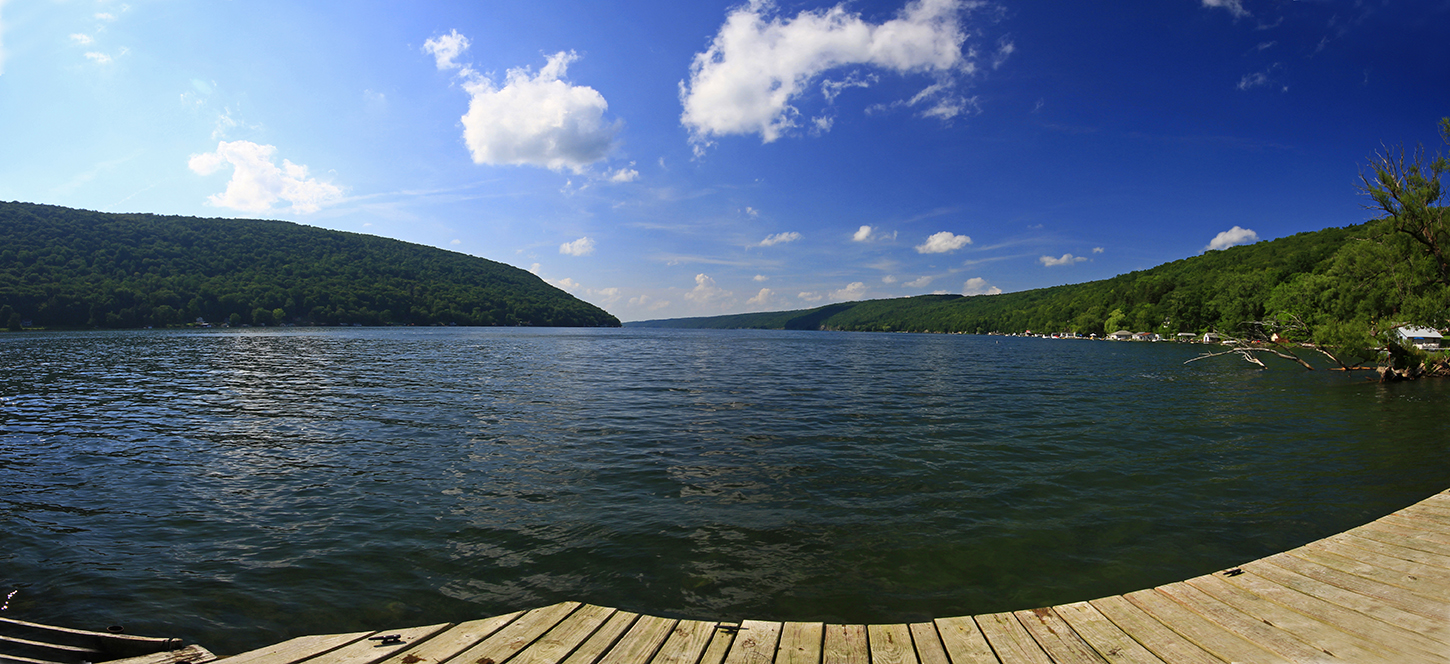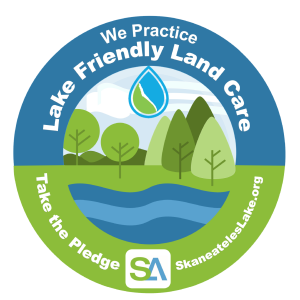WINTER WONDERS ON SKANEATELES LAKE
A Conversation with SUNY-ESF’s Lake Expert, Dr. Kim Schulz
by David Figura, on behalf of The Skaneateles Lake Association
[As appeared in Neighbors of Skaneateles Magazine]
What makes a good or bad winter for Skaneateles Lake in regard to water quality, plankton ecology, invasive species and aquatic ecosystems?
“I guess it might be different answers for different lakes,” said Kim Schulz, associate professor and limnologist at SUNY ESF, who studies and teaches about plankton ecology and aquatic ecosystems.
There are several factors to consider, she said. They include the extent of cold temperatures in late winter and early spring, the amount of snow that falls or the occurrence of heavy, unseasonable rainfalls — and most importantly, the current management of the watershed and shoreline surrounding the lake.
Temperature
“Most years, Skaneateles Lake freezes at the northern and southern ends, but doesn’t freeze completely over. A lake like that is ‘mixing’ all winter and becomes stratified (temperature-wise) in the summer months,” Schulz said.
Temperature affects the phenomenon of the lake’s water constantly ‘mixing’ during the cold months because the exposed surface water becomes colder than the warmer water underneath. As a result, the colder water (which is heavier) is constantly sinking and mixing (thanks to the wind) with the water underneath, oxygenating and supplying food for the organisms and plant life underneath on the lake’s bottom.
“For Skaneateles Lake, a good winter is for the winter to be long and for low temperatures to extend into the spring so that the lake is not stratifying really early on in the spring.”
Schulz said the sooner the lake surface warms up in the spring and becomes stratified temperature-wise, the longer the lake’s surface has a chance to heat up during the warm months – a condition favoring the appearance of “unfavorable things” people have been seeing a bit more in recent years.
“Namely, cyanobacteria blooms and blue green algae,” she said. “They often out-compete other algae in warm temperatures.”
A cold winter and delayed water stratification in the spring favors the formation of single-celled diatoms, a type of phytoplankton. The diatoms do well in such conditions and are consumed by larger zooplankton (copepods) in the lake, which are larger and more nutritious for small bait fish. The bait fish are then consumed by the larger fish.
An abundance of copepods in a lake are also beneficial in that they consume decaying plant matter.
On a side-note, the presence of healthy (for humans) fish oils in the flesh of the larger game fish originates with the diatoms, Schulz said.
On the other hand, if it completely freezes over, Shulz said, it’s like “having the fish and other lake critters locked in an airtight room with no fresh air supply. If the ice completely covers the lake for a long time the oxygen (in the water) begins getting used up by the fish, algae, plankton and other living things in the lake,” she said.
Snowfall, Rainfall and Lake Management
Meanwhile, the amount of snow the area gets, and the slow melting of it throughout and at the end of winter, usually has no negative impacts on the lake. The lake level is managed by the city of Syracuse and its dam at the lake’s northern end.
After getting just half the normal amount of snowfall last winter, Syracuse could see a return to a normal (or close to normal) amount of snowfall this winter, with heavy amounts likely to come at the end of the season, according to forecasts from Accuweather and the National Weather Service.
“The more snowpack you get, though, the more run-off (there is into the lake) in the spring,” Schulz said. “The impact on the lake depends on the quality of watershed management you have around the lake, which is generally good. A poorly managed watershed would result in more materials (from the shore) flowing into the lake.”
Those ‘materials’ (excessive nutrients) will remain in the water and later provide food for harmful algal blooms, she said.
What would be a negative factor, though, of excessive snowfall or continuous ice conditions during the winter and/or early spring would be the amount of road salt put on roadways in the lake’s watershed. Salty water is heavier than freshwater, Schulz said, and sinks to the lake’s bottom.
“Some of the things that live in the sediment at the bottom of the lake that can be food for some of the fish feeding down there can be negatively affected by it being too salty down there,” she said.
Due to climate change, the lake in recent years has been experiencing an unprecedented number of torrential rain storms in the late winter/early spring, resulting in run-off from surrounding fields and other areas along the lake’s shoreline, Schulz said.
Schulz said the Skaneateles Lake Association (SLA), with the advice of scientists and researchers from Syracuse University and SUNY ESF, is doing a “great job” or trying to manage run-off and “nutrient-loading” (such things as nitrogen and phosphorus) into the lake. (More on SLA’s lake protection efforts at skaneateleslake.org/special-report)
It’s a difficult task at times, considering the steep-sided shoreline and number of tributaries that run into the lake, she added.
Schulz pointed out that Skaneateles Lake is a primary water source for the city of Syracuse and many surrounding communities ringing the lake, including the village and town of Skaneateles.
“There are few lakes in the country where water doesn’t have to be filtered before it is used for drinking water – definitely fewer than 5,” Schulz said.
Skaneateles is among them.
(David Figura is the retired outdoors writer for The Post-Standard and a member of the Skaneateles Lake Association.)




